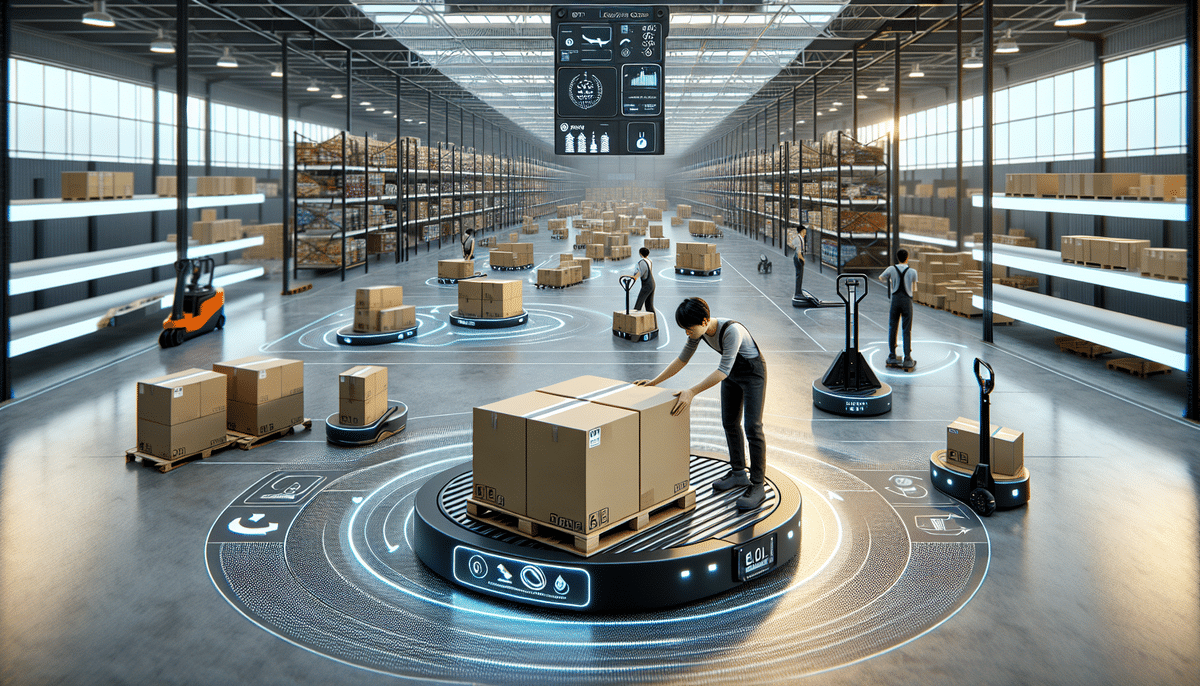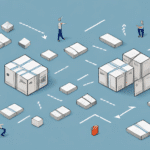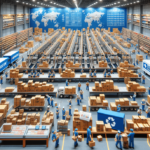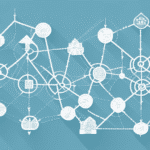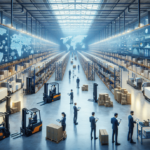A Comprehensive Overview of 3PL Logistics Fulfillment Coasters and Their Features
As the logistics fulfillment landscape evolves, businesses continually seek innovative methods to enhance efficiency and reduce costs. The global third-party logistics (3PL) market, projected to reach $1.5 trillion by 2027 according to MarketWatch, underscores the growing importance of logistics solutions. In this pursuit, a seemingly small but crucial tool has gained prominence: the coaster. This article offers an in-depth analysis of 3PL logistics fulfillment coasters and their features, exploring coaster types, advantages, key considerations, and the latest innovations in modern coaster designs.
What is 3PL Logistics Fulfillment? An Introduction
Before exploring the role of coasters in logistics fulfillment, it's essential to grasp the concept of Third-Party Logistics (3PL). According to the Council of Supply Chain Management Professionals, 3PL involves outsourcing logistics and fulfillment operations—including inventory management, order processing, and shipping—to specialized external providers. These providers oversee the seamless movement of goods from origin to destination, leveraging multiple carriers and advanced technologies to optimize the process.
A key advantage of partnering with a 3PL logistics fulfillment provider is scalability. Businesses can expand without incurring significant investments in additional infrastructure or personnel. By outsourcing logistics, companies can focus on their core competencies while benefiting from the expertise of 3PL providers. Moreover, 3PL providers often maintain established relationships with carriers, enabling them to negotiate better rates and achieve cost savings.
Choosing the right 3PL provider is critical for success. Factors to consider include the provider's industry experience, technological capabilities, and ability to handle specific requirements such as international shipping or specialized packaging. Clear communication and well-defined expectations are also vital to ensure a productive partnership.
Understanding the Importance of Coasters in Logistics Fulfillment
Coasters play a pivotal role in logistics fulfillment by acting as protective pads or mats that facilitate the transportation of items within facilities. They safeguard floors and prevent damage to products by offering a stable base for moving goods, whether they are cartons, pallets, or heavy machinery. Utilizing coasters ensures that goods are transported safely and efficiently to their destinations.
Enhancing Workplace Safety
One significant benefit of using coasters is the reduction of workplace accidents and injuries. According to the Occupational Safety and Health Administration (OSHA), slips, trips, and falls are among the leading causes of workplace injuries. By providing a stable and secure surface, coasters help prevent such incidents, protecting employees and minimizing the risk of damage to products and equipment.
Boosting Operational Efficiency
Beyond safety, coasters enhance the overall efficiency of logistics operations. A smooth and stable surface allows for easier movement of goods, reducing the time and effort required to transport items. This streamlining of processes leads to increased productivity, cost savings, and greater profitability for businesses.
Types of Coasters Used in 3PL Logistics Fulfillment
There are various types of coasters used in logistics fulfillment, each designed to meet specific needs:
- Rubber Coasters: Constructed from durable materials like neoprene or natural rubber, these coasters are ideal for heavy loads or outdoor use.
- Polyurethane Coasters: Lightweight and suitable for medium loads, polyurethane coasters are best for indoor applications.
- Foam and Felt Coasters: These softer coasters provide excellent cushioning and protection for delicate items such as electronics and glassware.
- Specialized Coasters: Custom-made coasters with features like non-slip surfaces, anti-static properties, or the ability to absorb moisture or chemicals cater to unique requirements.
Selecting the appropriate type of coaster is essential for effective logistics fulfillment. For example, foam and felt coasters are ideal for fragile items, ensuring they reach their destination undamaged. Conversely, rubber coasters are necessary for transporting heavy items, offering the required support and durability. Choosing the right coaster type ensures smooth and efficient logistics operations.
Advantages and Disadvantages of Using Coasters in Logistics Fulfillment
Advantages
- Protecting floors and preventing damage to items
- Improving efficiency by reducing friction and enabling smoother movement of goods
- Reducing noise and vibrations during transportation
- Preventing accidents and injuries by ensuring proper handling
Disadvantages
- Additional costs for purchasing and maintaining coasters
- Extra time and effort required to install and remove coasters
- Limitations on the types of items that can be moved with coasters
Additionally, coasters may not be suitable for all flooring types. Soft or uneven surfaces can cause coasters to sink or become unstable, and they may be ineffective for very heavy or bulky items that exceed their weight or size capacity. It is crucial to evaluate the specific needs of your logistics operations before deciding to use coasters.
Factors to Consider When Choosing the Right Coasters for Your Business Needs
When selecting coasters for your logistics fulfillment operations, consider the following factors:
- The type and weight of the items being moved
- The surface area and condition of the floors in your facility
- The frequency and distance of goods transportation
- The environment and weather conditions where the coasters will be used
- Cost and maintenance requirements
Additionally, the size and shape of the items being moved are important considerations. Large, bulky items may require larger coasters with higher weight capacities, while items with irregular shapes may benefit from adjustable or customizable coasters to ensure a secure fit. Assessing your specific business needs will help you choose coasters that effectively support your logistics fulfillment processes.
How to Optimize the Use of Coasters for Efficient 3PL Logistics Fulfillment
To optimize coaster usage in 3PL logistics fulfillment, implement the following best practices:
- Ensure proper handling and placement of items on coasters to maintain balance and stability
- Regularly inspect and maintain coasters to keep them in good condition and replace any damaged units promptly
- Use coasters with appropriate load capacity and surface area for the items being moved
- Implement a streamlined system for the efficient installation and removal of coasters
- Provide comprehensive training to employees on the safe and effective use of coasters
It is also important to select coasters suitable for the surfaces they will be used on, such as carpet, concrete, or tile. Using the wrong type of coaster can lead to damage to both the coaster and the flooring. Additionally, ensure that the load capacity and surface area of the coasters match the weight and size of the items being transported to prevent slipping or falling during movement.
Innovative Features and Technologies in Modern Coaster Designs for Logistics Fulfillment
Advancements in technology have introduced innovative features in coaster designs for logistics fulfillment:
- IoT Integration: Incorporating IoT sensors allows for the tracking and monitoring of the movement and condition of goods during transportation, providing real-time data to optimize logistics processes.
- Anti-Microbial Materials: These materials reduce the risk of contamination, particularly in the food and healthcare industries, ensuring the integrity of sensitive products.
- Eco-Friendly Designs: Modern coasters are being made from sustainable and recyclable materials, promoting environmental responsibility and reducing the carbon footprint of logistics operations.
- Self-Propelled Coasters: Battery-powered coasters that can navigate inclines and uneven surfaces enhance mobility and efficiency, reducing the need for manual handling.
Another innovative feature is the use of augmented reality (AR) technology. AR can provide additional information about the products being transported, such as origin details, ingredients, or manufacturing processes. This interactive element enhances transparency and builds trust with customers.
Advanced security features are also being integrated into coaster designs. Biometric authentication systems, like fingerprint or facial recognition, ensure that only authorized personnel can access the goods. Additionally, GPS tracking and remote locking mechanisms help prevent theft or tampering during transportation.
Best Practices for Maintaining and Cleaning Coasters for Long-Term Use
To extend the lifespan and ensure the effectiveness of your coasters, adhere to the following maintenance and cleaning best practices:
- Regularly inspect coasters for signs of wear and tear, and replace them as needed to maintain functionality
- Clean coasters with a mild soap and water solution, then dry thoroughly before use to prevent buildup of dirt and contaminants
- Store coasters in a dry, cool place away from direct sunlight to prevent material degradation
- Implement a routine maintenance schedule to systematically address any issues and prolong the lifespan of your coasters
Cost-Effective Ways to Source and Purchase Quality 3PL Logistics Fulfillment Coasters
When sourcing and purchasing logistics fulfillment coasters, consider these cost-effective strategies:
- Purchase from reputable suppliers who offer volume discounts, ensuring you receive quality products at a lower per-unit cost
- Lease or rent coasters instead of buying them outright to reduce upfront expenses and maintain flexibility
- Bundle coaster purchases with other logistics and fulfillment supplies to take advantage of package deals and reduce overall costs
- Explore secondhand or surplus markets for quality coasters at lower prices, provided they meet your operational standards
Common Mistakes to Avoid When Using Coasters in Logistics Fulfillment
While coasters offer numerous benefits, it's important to avoid these common mistakes to ensure optimal performance:
- Using the wrong type or size of coaster for the item being moved, leading to instability and potential damage
- Placing items too close together on coasters, which can cause damage and create instability during transport
- Neglecting the maintenance and cleaning of coasters, resulting in reduced lifespan and effectiveness
- Overlooking safety protocols and mishandling items during transportation, increasing the risk of accidents and damage
Future Trends and Developments in the 3PL Logistics Fulfillment Industry That Will Impact Coaster Usage
As automation and digitization continue to transform the logistics fulfillment industry, coaster usage is also evolving. Future trends include:
- 3D Printing: Customizable coasters tailored to specific needs can be produced efficiently, enhancing flexibility and functionality in logistics operations.
- Robotics and AI: These technologies can optimize coaster placement and movement, increasing efficiency and reducing human error through intelligent automation.
- Growth of E-Commerce and Same-Day Delivery: The rising demand for rapid delivery services is likely to increase the use of coasters to streamline and accelerate logistics operations, meeting consumer expectations for speed and reliability.
By staying informed about these trends and integrating innovative coaster designs, businesses can enhance productivity and efficiency in their logistics operations, positioning themselves for future growth and success.
In conclusion, coasters are a critical component in 3PL logistics fulfillment. By carefully selecting the appropriate types, maintaining them properly, and embracing technological advancements, businesses can optimize their logistics processes, achieve cost savings, and improve overall operational efficiency.

